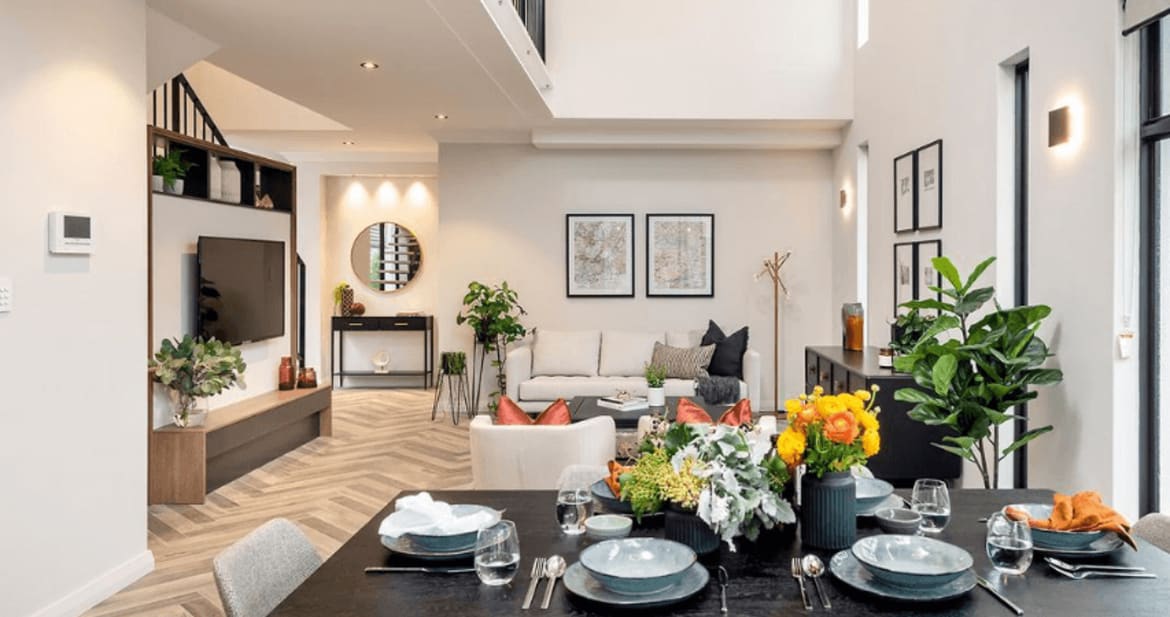One of the benefits of a double-storey building is the freedom to create dramatic spaces through design elements like the inclusion of a void. Voids can serve to ventilate, let in light and create a remarkable design focus with their double-height space.
Voids are not purely aesthetic, however. Multi-level dwellings without a void can feel somewhat divided into compartments; voids can create connection points throughout a home to bring families together.

The Aria
Using a void can improve natural lighting

The Soho
Depending on your block orientation and surrounding homes, sometimes the lower floors of a two-storey home can suffer from a lack of natural light. Such issues are especially noticeable with homes on a narrow block. A well-placed void can offer the utility of a skylight without the need to include solar domes and flexible solar tubes through the home.
The Soho display home showcases how a void adds to the appeal of common spaces by letting in additional lighting and a feeling of spaciousness no matter the building’s footprint.
Void design in modern homes
A void in your floor plan will usually be there to accommodate services, as a space for the staircase, or simply as an aesthetic feature such as in a foyer or sunroom.

The Soho

The Cottesloe
Much like a beautiful musical composition, it’s the space between the notes that allows beauty to come to the fore. Used in an entryway, a void introduces a welcoming sense of space and light that can flow through the entire home.
How to maximise the impact of a void in your home
A void offers benefits at night as well; namely adding personality to your entryway with beautifully-designed light fixtures or ornamental hanging features.
Stairs create a void by their nature, but one that can be stylishly designed. If your staircase features multiple landings and turns, you might consider installing shelving to house ornaments or under-stair storage.
What do I need to consider with a double-storey void?
In Australia, stairs, mezzanines and double-storey voids require balustrading, so those with young children need not worry. A void does have some additional minor maintenance considerations, for example: dusting or window cleaning will require an extendable rod with attachments.
The most frequent concern homeowners raise is around difficulty changing light globes or light fixtures. It is true that you may need a ladder to change a bulb in a void, but the already rare occasion is further reduced by opting for LED lighting. LEDs have no traditional filament to ‘burn out’ and carry warranties of around 5-7 years. They’re also one of the most energy-efficient lighting types on the market, so well worth the investment.

The Capital
Natural light is a benefit, though high windows can potentially result in unwanted heat transfer. Selecting double glazed windows for higher points in a home can offer better thermal control. Installing automatic shutters/blinds in hard-to-reach areas is another option that homeowners rarely regret.
Bringing the indoor and outdoor together with a void

The Aria
Aussies love our outdoor lifestyle, and the alfresco area is pretty much the second living room in many family homes. Looking at the Aria display home as an example, a void allows one to elevate the ‘verandah’ coverage, connecting the interior and exterior of a building. Whether you’re entertaining guests, or relaxing inside with a good book, you’ll be able to appreciate the framing of the sky, treetops and landscaping elements, all visible from the first floor or mezzanine walkway.




